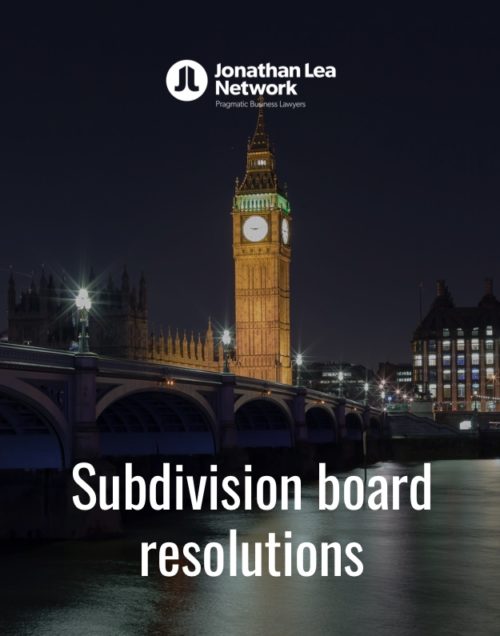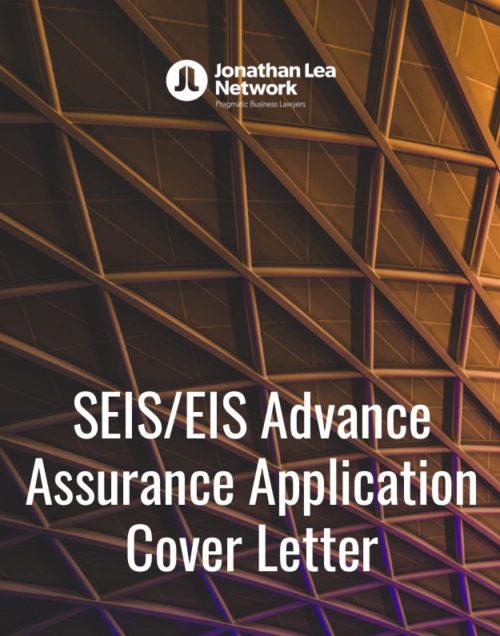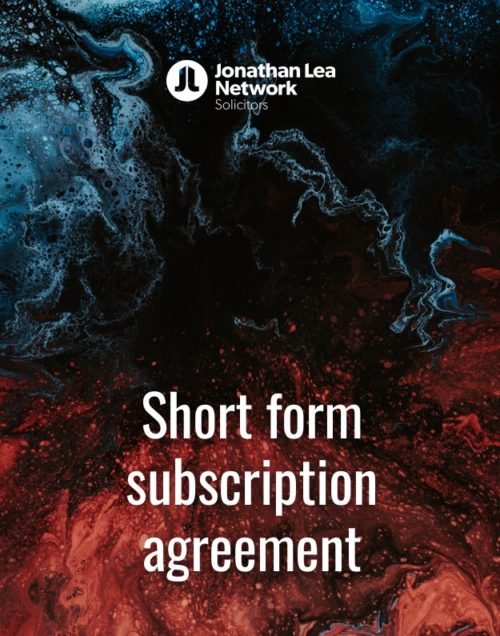Completion Accounts Mechanism
£6.99
This product constitutes an easily adaptable completion accounts mechanism template to insert into a share purchase agreement, together with a set of tailored guidance notes which aim to set out how to correctly fill-out the template and explain all significant provisions so as to allow you to insert a valid and legally binding mechanism within your share purchase agreement.
It is advisable that this template is used alongside our short form share purchase agreement, given that the mechanism will have to be inserted within the share purchase agreement.
Further down the page are our guidance notes relating to this template which you will also receive as a separate document when you buy the product.
Guide to the Jonathan Lea Network Completion Accounts mechanism to include in Share Purchase Agreements
This guide aims to set out how to correctly include and fill-out the completion accounts mechanism template and explain all significant provisions so as to allow you to understand and put into effect a valid and legally binding completion accounts mechanism within your Share Purchase Agreement.
This mechanism is intended as a template only and must be adapted to the particular circumstances of your case.
Your input is required at the parts of the agreement highlighted in yellow and the wording inside the square brackets which we have included explains clearly the information that should be inserted. You are advised to fill in the wording in square brackets in lower case unless directed otherwise. Any figures should be entered in numerical form. The brackets should be removed after the amendments are made. In addition, clause and schedule numbers may need to be amended.
Please note that the price adjustment mechanism in this template is based on the more common mechanism of the net assets of the Company (that is, including long-term assets and long-term liabilities). There are however many different valuation methodologies that a buyer could adopt in setting the purchase price for a share acquisition. Other mechanisms include those based on the Company’s cash, debt and working capital position, net profits, EBITDA or the value of specific assets. This template must therefore be amended accordingly depending on the price adjustment mechanism agreed upon.
This template mechanism will likely involve heavy input from each parties accountants as you negotiate and come to an agreement on the figures involved and over how this mechanism will take shape.
Clause and Schedule breakdown
Clause 1 (Definitions)
Clause 1 sets out the definitions that will apply throughout the Share Purchase Agreement and that are specific to the operation of the Completion Accounts Mechanism. Please note that some of these clauses may already exist in your Share Purchase Agreement and may need to be amended accordingly. In addition, where a defined term is more commonly used within the Completion Accounts Schedule, the defined term within the main agreement simply cross-refers to the relevant Schedule.
Please note the following in respect of the defined terms:
- Accounts Date – this will be the ending date of the period the Company’s most recent set of unaudited accounts relates to.
- Adjustment Date – please feel free to amend the number of Business Days to a more appropriate number for your scenario. This date relates to when any adjusting payment is required to be carried out after the Completion Accounts have been agreed and approved by the parties.
- Company – This will be the company that the Seller holds shares in. The registered company name, office and number of the company should be inserted accordingly. If a company is trading under a name other than the registered company name, the words “trading as [insert trading name]” may be inserted just after the relevant party’s address. If a company is registered in a place other than England and Wales, the words ‘England and Wales’ should be replaced with the relevant country of registration.
- Sale Shares – This mechanism is based on the Buyer purchasing the entire issued share capital of the Company. You will need to insert the number and class of shares being purchased, as well as the nominal value of the shares.
- Target Net Assets – This is the agreed figure between the Buyer and Seller and the actual net assets as shown in the Completion Accounts will be measured against this figure. The Purchase Price will be amended accordingly to reflect any increases or reductions where the Completion Accounts is above or below this agreed figure.
Clause 2 (Purchase Price)
The agreed purchase price will need to be inserted at clause 2.1.
At clause 2.2, the Seller will need to provide their bank account details to ensure payment is made to the correct account. This will include providing the name of the bank, sort code and account number (as well as the IBAN and SWIFT if the transaction is occurring cross-border).
Clause 3 (Completion Accounts and adjustment of Purchase Price)
This clause contains operative provisions around the adjustment and calculation of the Purchase Price as well as how and when any adjusting payments will need to be made.
Please note that this template does not take into account any interest between the Completion Date and Adjustment Date and does not enable a Buyer to make the initial payment through escrow (which the Buyer may wish to do so where they have any concerns in respect of the Seller).
In addition, this template does not provide for some leeway as to when an adjustment payment is required. For example it is becoming increasingly common for parties to agree a “Lower Target Net Assets” figure and “Upper Target Net Assets” figure whereupon if the net assets falls within these figures no adjusting payment will need to be made from either party (providing some room for flexibility).
At clause 3.4, if necessary please amend the number of Business Days the Buyer is required to notify their accounts to the Seller by, before any adjusting payment is required to be made by the Seller.
Schedule 1 – Completion Accounts
Paragraph 1 (Definitions)
Please note that your accountants may require any of these definitions to be amended or include additional defined terms specific to your scenario.
The Review Period is the period of time with which the Buyer can review the Draft Documents provided to them and, if required, notify the Seller of any objections they have as to the preparation of the documents. Please feel free to adjust the number of Business Days this Review Period will last according to your scenario.
Paragraph 2 (Preparation of the Completion Accounts and Net Assets Statement)
It is often negotiated between the parties as to who will prepare the initial draft of the Completion Accounts and Net Assets Statement as there is often wriggle room and scope for interpretation as to how the agreed policies and procedures will be implemented when preparing the Draft Documents. It is usually more common for the Buyer to prepare the Draft Documents given they will be purchasing the business but the Seller may insist that, due to their familiarity with the business, they be the ones to prepare the Draft Documents. This template has been drafted as if the Buyer will be preparing the Draft Documents.
You may wish to amend the number of Business Days the Buyer has to prepare the Draft Documents following the Completion Date (a number of factors will likely have to be considered here including the complexity of the transaction, the size of the accounting records, access to the Company’s records and when completion occurs).
Paragraph 2.2 enables any documents under the control of the Seller following completion to be provided to the Buyer where necessary.
You may wish to amend the number of Business Days the Resolution Period lasts to enable the Seller to have a longer chance to study the Draft Documents.
Paragraph 3 (Expert Determination)
These paragraphs set out the procedure that the parties will have to adhere to following a dispute with the Completion Accounts.
At paragraph 3.2 you may wish to amend the number of Business Days the parties are able to negotiate and agree upon an Expert and their terms of appointment themselves.
At paragraph 3.7 you may wish to amend the number of Business Days the Expert has with which to make their determination (this may depend upon the complexity of the matter the Expert has been appointed to determine).
Similar to paragraph 3.2, at paragraph 3.9 you may wish to amend the number of Business Days the parties are able to negotiate and agree upon a replacement Expert.
Paragraph 4 (Basis for preparing the Completion Accounts)
This provision sets out the accounting principles and standards that must be followed when preparing the Completion Accounts.
This is particularly important to ensure the correct principles and standards are being followed specific to your scenario as there are a number of different accounting methodologies. As such you will need to make sure your accountants input is sought.
Paragraph 5 (Specific Policies)
This provision sets out any specific accounting policies, principles or estimations agreed upon when preparing the Completion Accounts to maximise certainty and minimise the chances of any disputes occurring.
You will need to discuss with your accountants and negotiate with each party to ensure this provision takes into account any additional specific accounting policies to your scenario that are not already covered by the template.









